Are the tomato plants you started this spring looking a little… spindly? Sad? You’re probably dealing with leggy tomato seedlings, one of the most common issues when starting tomato seeds indoors.
Leggy tomato seedlings can impact how successful the plants will be in the outdoor garden, but don’t worry: it’s usually fixable.

Jump to: Why Leggy Tomato Plants are Bad | Causes of Leggy Tomatoes | Easy Fixes
This post may contain affiliate links. As an Amazon Associate, I also earn from qualifying purchases. You can read our disclosure information here–
Will Leggy Tomato Seedlings Grow Well Outdoors?
If you don’t correct leggy tomato seedlings, it can definitely be problematic for the later success of the plant in an outdoor environment.
The weak stems of these young plants can easily break with a heavy wind or rainstorm.
Aside from stem breakage, the plants’ subsequent growth can be slower, and since they’re less healthy, pests can make easy work of them if given the chance.
Causes of Leggy Tomato Plants
If your seedlings are compact with thick stems, have green leaves, and a short distance between each set of leaves (short internodes), you’re good to go.
These are signs of healthy seedlings and they will do fine once you move them outside (after you’ve gradually hardened them off).
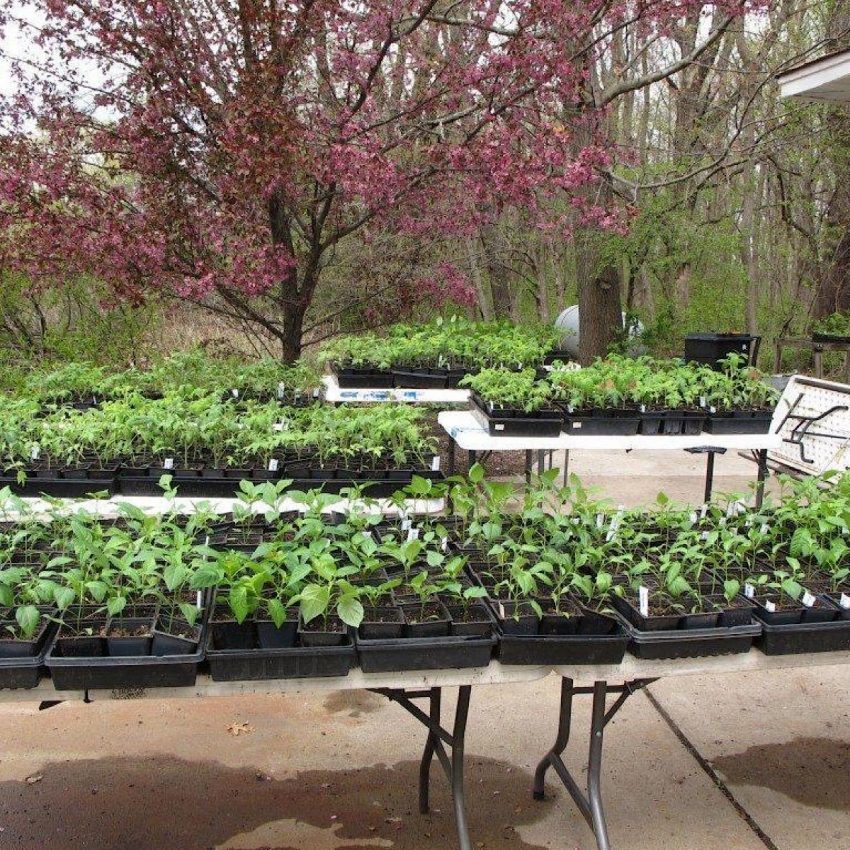
But what if the seedlings are looking spindly rather than stout and strong? Where did you go wrong?
The most common causes of leggy tomato plants include the following:
1. Not Enough Light
If you grow houseplants, you’ll know that for many plant species, the light they receive on a windowsill is enough to allow them to thrive.
You may also know that for other plants, this is not the case. Tomatoes fall into this category: they need stronger light than you can offer them on a windowsill for long-term survival and success.
Young seedlings especially need more light in early spring, when daylight is not as strong as it is in summer, and when the duration of daylight is shorter.
You can actually easily test yourself why indoor light isn’t enough for your tomatoes. Get a cheap light meter and point it at your window.
Even the brightest windows won’t yield more than a couple thousand foot candles (a popular measure of light intensity used in horticulture).
Now go outside on a sunny day and point the light meter to the sky: it’s not unusual to hit 10,000 FC or more! Quite the difference.
If you started your tomato seedlings indoors and the weather does not yet permit outdoor transplanting, it may be a good idea to invest in a grow light or two.
Placing lights right above young seedlings (and moving it up as they grow) will make a huge difference in their health.
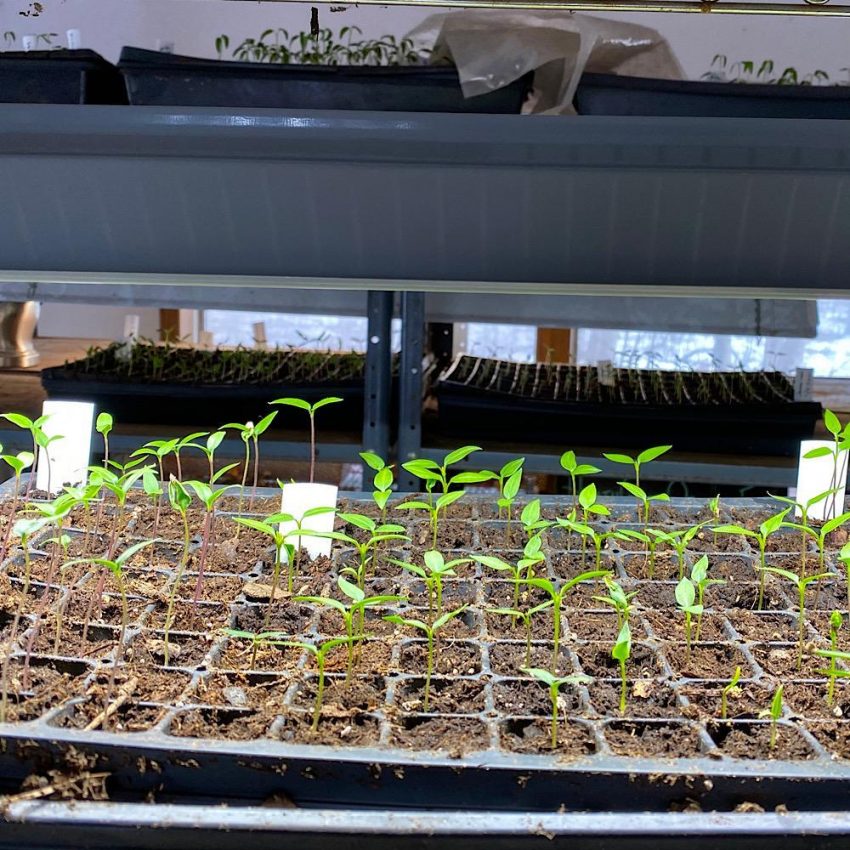
2. Overcrowding
How many tomato seeds did you sow, and how many have germinated? A good germination rate is always great, but there is such a thing as too much.
It is important to thin out the seedlings if you were a bit too generous while sowing. When germinating tomato seedlings in small celled pots, leaving no more than one per cell is a good rule of thumb.
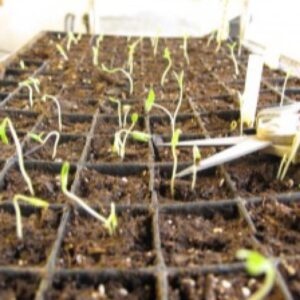
3. Too Hot
Some growers like to use a heat mat while germinating tomato seedlings. After all, these plants originated from toasty Central and South America, so they do grow best when provided with plenty of warmth.
However, if you have the heat mat cranked up and maybe also a grow light above the plants emitting warmth, things can become a bit too much.
I have a low-tech bottom heat system that involves placing 75-100 watt light bulbs under the trays and covering the top of the tray with plastic.
It requires monitoring and shifting the trays around a bit, but it works like a charm.

Although temperatures of up to 80 °F can be great for germination, you will need to decrease the temperature once the seeds have germinated.
I germinate my seeds at around 75-80 degrees F but once they are growing, I try to keep the ambient temperature around 60-65 degrees F.
I sell tomato plants at farmers’ markets and start all of them from seed. Here are a few guidelines that I have learned over the years about starting tomatoes from seed to seedling to garden.
4. Excessive Nitrogen
Are you fertilizing the seedlings? Excessive nitrogen application, especially combined with lack of light, can cause leggy tomato seedlings.
Remember, most good potting soils will already contain nutrients, and it is not necessary to add fertilizer at the germination and seedling stage.
5. Starting Seeds Too Early
As noted in the 2022 paper noted below on tomato disorders: ““Legginess” often occurs in winter and early spring when starting seeds indoors if they are started too early.
There is a timeline on the seed packages that tells you when indoor-started seedlings should be transplanted outdoors. If the seedlings have to keep growing indoors without a grow light due to outdoor weather conditions, they will develop weak stems.
Starting seeds too early without a grow light can lead to very leggy tomato seedlings. Using a grow light will allow your plants to remain strong, even if you have to wait for the weather to become amenable to outdoor planting.
This article will help on the kinds of grow lights that work best and the distance from seedling to grow light.
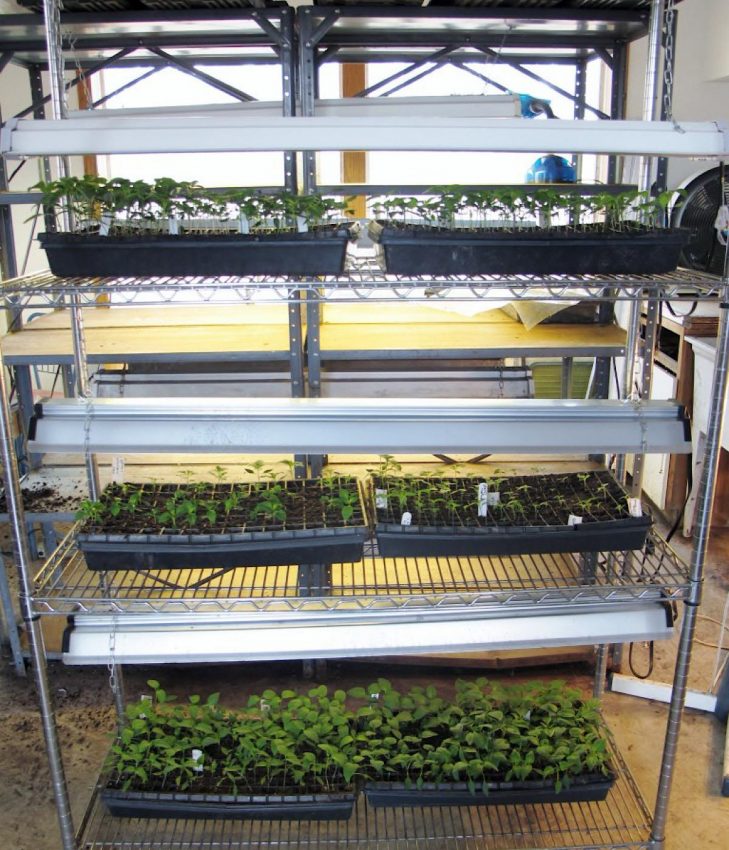
Remember: they will germinate in about 5 days and will be ready for planting outside between 4-6 weeks. Count backwards from your estimated last frost date before starting your seeds.
For me in Minnesota, this means starting tomatoes in mid-March. Planting them outside in MN too early is a recipe for failure, as the weather always gets warm in April and is invariably followed by a cold snap and everything dies.
TIP: Really eager to start those tomatoes? There is one solution: growing them in pots. This way, you can place them outside to enjoy the spring sun earlier than usual, as it allows you to bring them back in for a bit if things get to chilly. Do keep a very close eye on the weather forecast if you’d like to go this route, though!
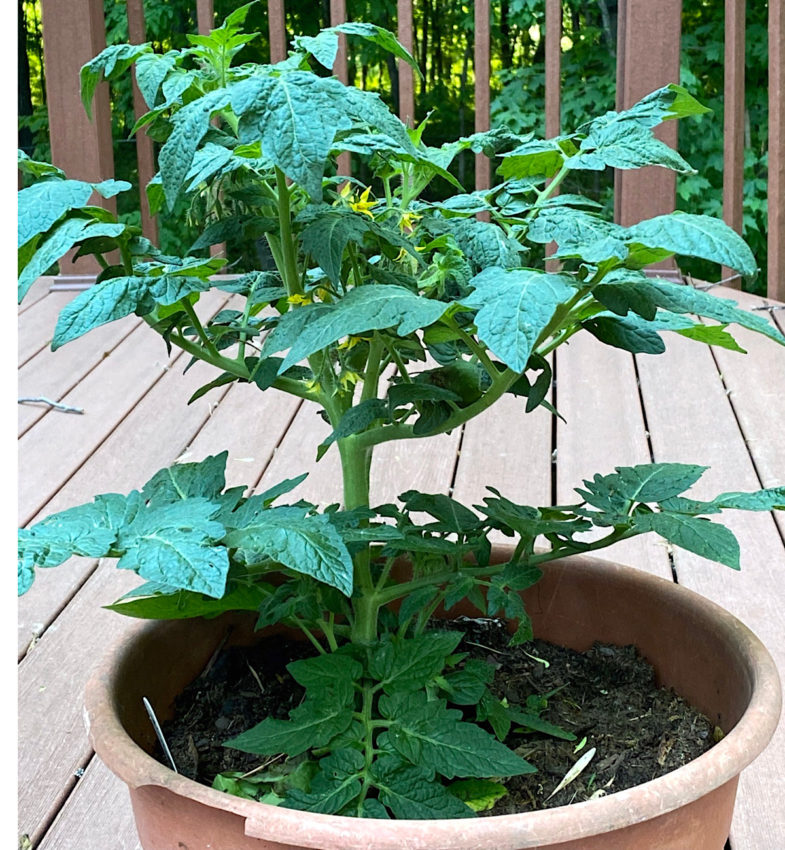
6. Seedlings Need to be Hardened Off
Unless you’ve set up a dedicated indoor garden structure, tomato plants just belong outside. Be sure and harden off the young tender plants before placing them in the outdoor garden.
Hardening off means exposing them gradually to the outdoors for a few hours a day before planting them in the ground.
You can start the hardening off process once the seedlings have 2 sets of true leaves, usually 20-30 days after you sow. Hardening off young plants is a gradual process and you may have to skip the days when the weather is too windy or too cold.
Tip: Are you seeing other issues with your plants aside from just legginess? Have a look at the full post on problems with tomato seedlings to help you diagnose and fix them.
How To Fix Leggy Tomato Seedlings
If your seedlings start to show signs of trouble before you’re ready to plant them outside, treating it right away will often save the health of the plant.
Your best bet is to move the light source closer to the growing tips of the plant.
You may also find it helpful to add an extra in-between stage by potting them up into larger pots when they have 2 leaf sets.
Later, you can replant them again into full-size pots or into full soil. When potting up, make sure you plant the leggy seedlings extra deep, essentially removing the extra stem space.
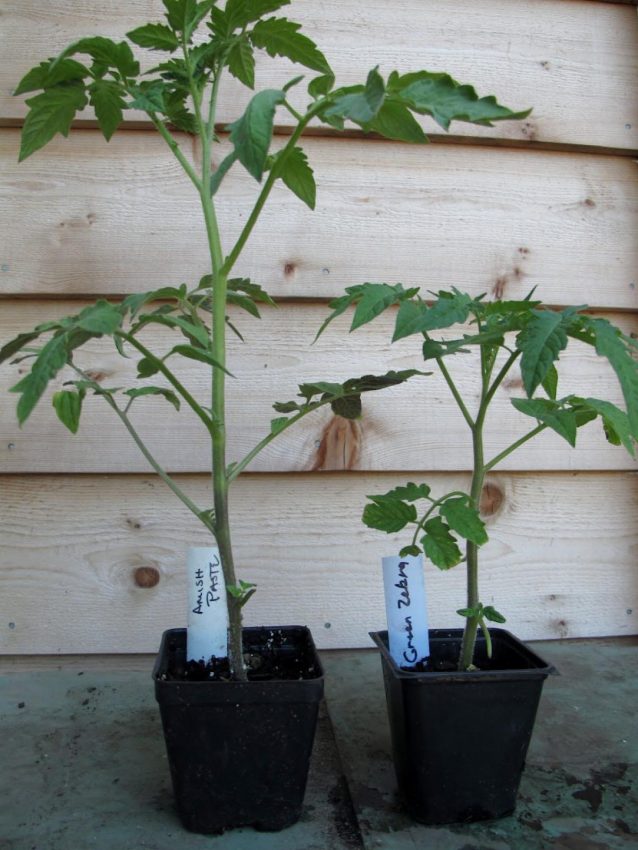
The reason planting leggy seedlings quite deep works well is because tomatoes can grow roots from their stems. As such, deep planting is a good way to fix legginess, encourage root growth and strengthen the stems.
When you move the plants to full soil after hardening them off, you can also plant them deep to make up for the long stem.
If the stems are pliable, you could even gently bend them like in the image below to avoid having to dig very deep.
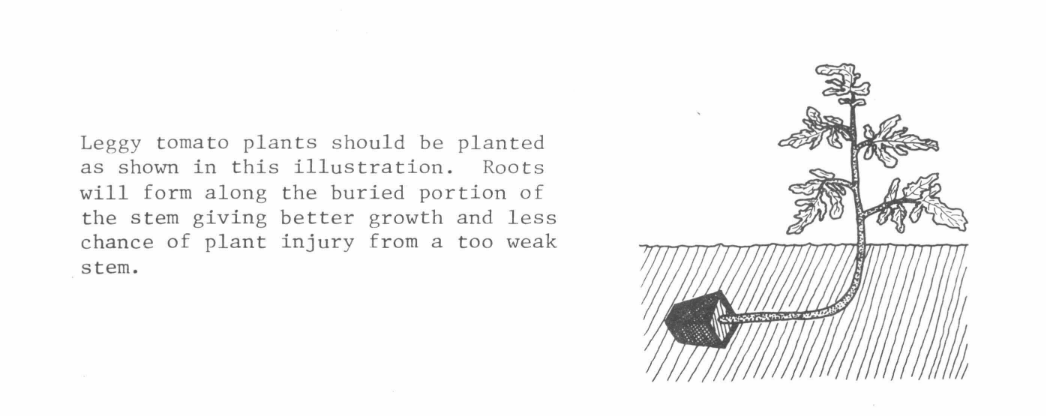
If you like my articles about cooking and gardening, subscribe to my weekly newsletter, where I share free recipes and gardening tutorials.
Sources & further reading
Jett, L. W. (2004). Production of tomatoes within a high tunnel. Small Farm Today, 21(6), 36-40.
Volesky, N., Murray, M., Hansen, S. M., & Lewis, M. A. (2022). Abiotic Disorders of Tomatoes.

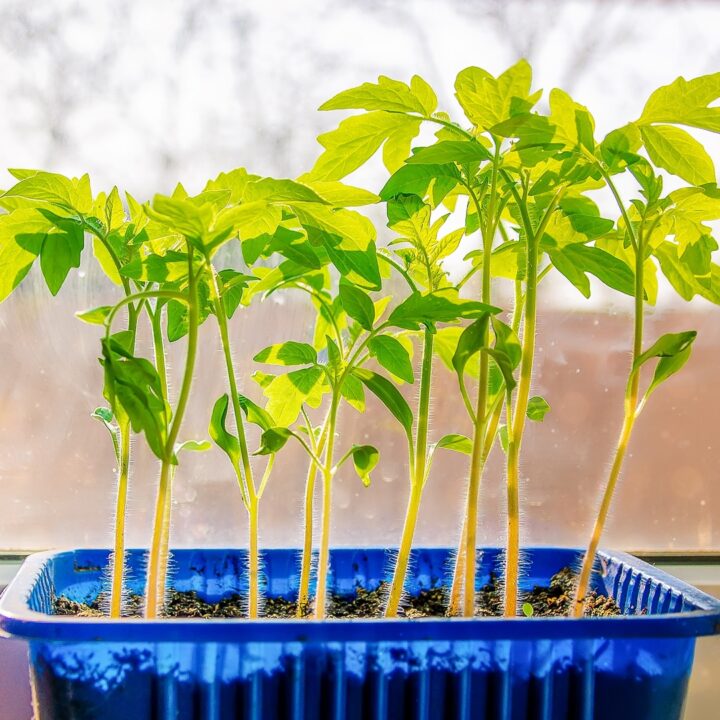
Good info! What day do you suppose I should plant my seeds? I’m not sure when the last frost is but it’s 56 and raining like crazy in the backyard right now. Crazy warm rain in the winter.